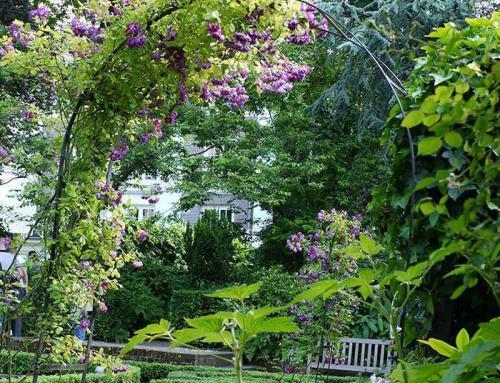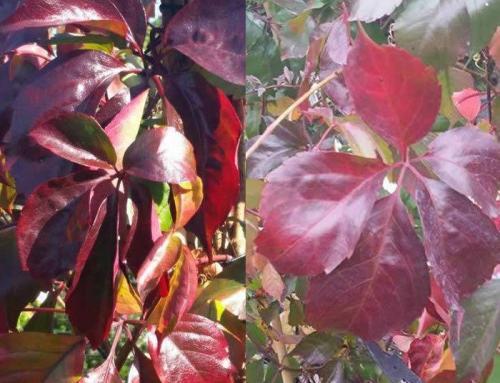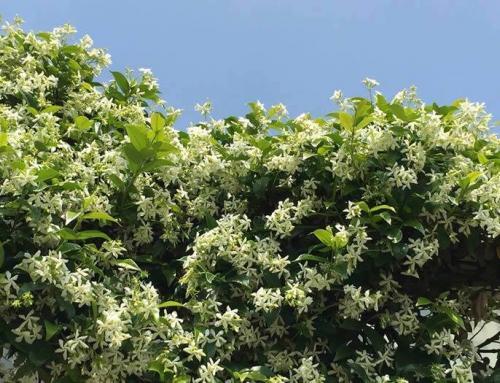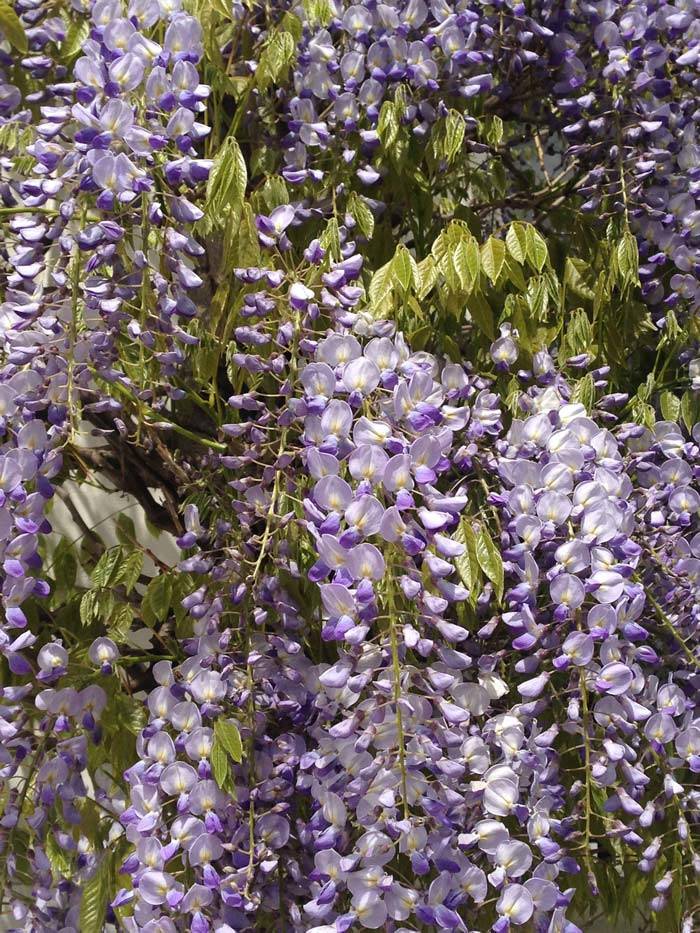
Urban Garden Climbers – Wisteria in its spring flowering glory
If we are lucky enough to have a garden or terrace, most of us living in the UK’s cities and large towns don’t have the luxury of large outside spaces. A common challenge is: how to create a verdant haven while using as little space as possible for planting? You still want to be able to fit at the very least a little table and a couple of chairs after all.
Well, this is in fact the beauty of climbers. They provide vertical verdant cover, similar to trees or evergreen screening but while taking up minimal lateral space. Climbers will grow up walls, gables, fences, outbuildings, even established trees. They can be trained against fences. They will grow over an arbour or a trellis for dramatic effect. And they won’t take up much lateral space. This makes climbers ideal for the small urban gardens of today.
Most urban gardens are likely to be enclosed with manmade boundaries on all sides, such as brick walls, concrete walls, wooden fencing, railings or similar. But you don’t have to settle for looking at your neighbour’s ugly fence or the boring gable end of the adjacent building. Instead, you can use these existing walls and fences to transform your outside space into a vertical green haven by using climbing plants that will naturally cling to vertical supports as they strive upwards towards the light.
And if you take a little time at the outset to choose your climbing plants carefully to suit your garden’s aspect, you will be rewarded with differing shades and textures of foliage, an abundance of flowers in spring and summer and a bounty of fruits and berries in the autumn. All of which will give a much needed helping hand to our urban wildlife too.
Most climbers attract butterflies and moths, bird and bees by providing flowers and fruit as well as just covering whatever it is they have to cover. They provide raw materials for nest building for the smaller birds. Consider honeysuckle, a variety such as Lonicera Halliana, with its irresistibly scented white flowers, it is a real wild life magnet.
The idea is to use climbing plants to create a framework of green to act as a soft backdrop and please the eye. The delight of the climber is they allow you to create a wide diversity of colours and textures in a small area. They tend to be naturally competitive plants and don’t mind competing with each other for the best upward spots in the sun. You can mix them up for thicker vertical cover and staggered flowering and fruiting periods.
Once your framework or backdrop is in place you can accentuate and enhance your outside space with strategically arranged plants in terra cotta pots or a carefully chosen topiary centre-piece.
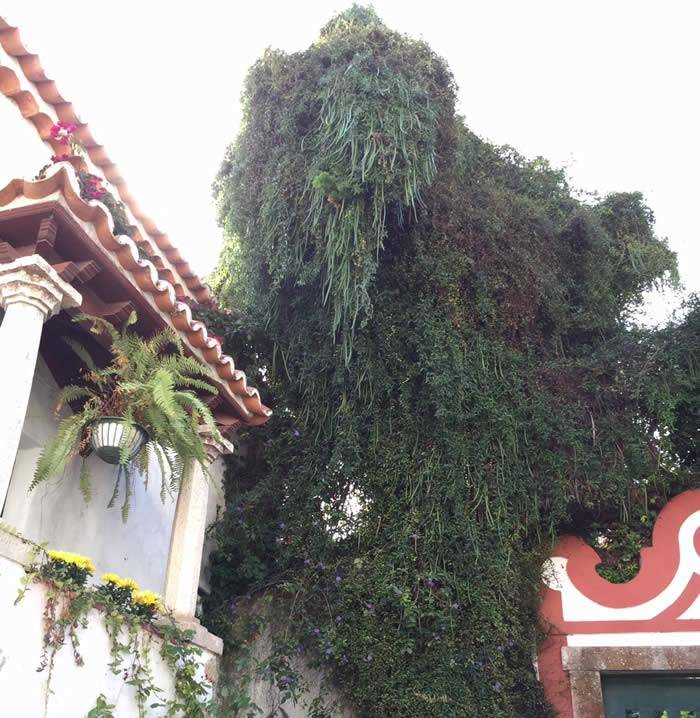
Climbing plants for Walls & Fences – an array of diverse, established climbers add drama and beauty to an old wall
Aspect:
There are climbers that will suit all aspects, even if your garden or terrace is north facing and in shade for most of the day. Let’s take a closer look at some of our bestselling climbers.
Versatile Ivy
For good thick verdant cover in shady spots with perhaps not so good soil or awkward spots, ivy is ideal. Underrated and overlooked by many, the humble ivy has in fact much to commend it. It is evergreen and will provide cover all year round. Ivy is fast growing so a good choice if you want an ugly spot covered quickly. Ivy will also grow in full sun. In fact, Ivy will grow virtually anywhere. Left to its own devices it produces pollen and berries, much to the benefit of insects, butterflies and other pollinators. And ivy is a preferred nesting spot for our increasingly rare urban wren. You can choose the green foliage Common Ivy (Latin name Hedera Helix) or the Variegated Ivy with cream and green foliage (Latin name Hedera Gloire de Marengo).
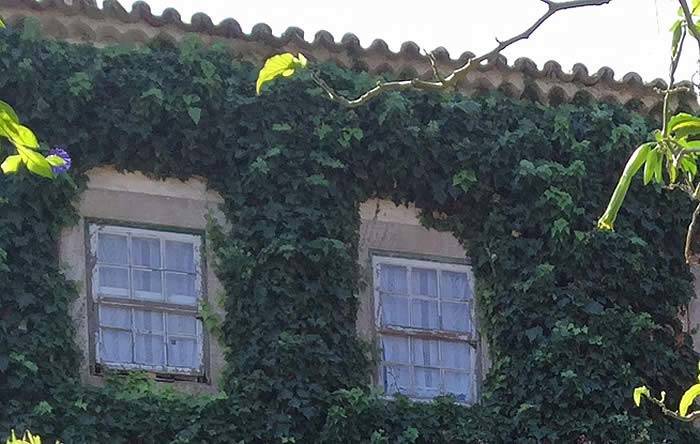
Urban Garden Climbers – Climbing Ivy, a charming, vertical wall of green
For not so sunny spots:
For deep shade, in addition to Ivy, the deciduous climber Hydrangea Petiolaris is a top choice. It will take off on cold north facing walls and does not require a lot of maintenance. It will produce masses of white flowers packed with pollen to keep the bees happy throughout the summer and light up the garden with its vibrant red autumn colour. And it won’t take up much of the precious ground space. Give it 2 to 3 years to establish itself and it will transform that cold-looking bare north wall.
For the sunny spots:
For the sunnier walls or south or west facing fences, in addition to honeysuckle, try Jasmine, a real favourite also with the butterflies and bees. Particularly popular is the evergreen variety Star Jasmine (Latin name Trachelospermum Jasminoides).
Clematis are always a good choice with their showy flowers such as Clematis Zara which produces stunning purple flowers in summer.
And of course spring flowering Wisteria. A good choice is Wisteria Sinensis, a vigorous grower producing breath-taking racemes of cascading pale blue-purple flowers in spring.
Other possibilities are the climbing roses such as the white flowering Rosa Banksiae Alba.
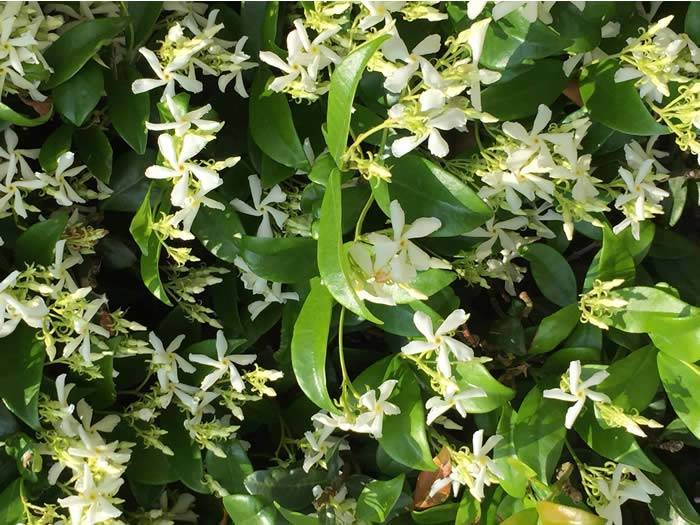
Urban Garden Climbers – Evergreen Star Jasmine in flower
View the climbers section of our website for lots more ideas, including individual descriptions of all the featured climbing plants. Read our blog feature for more ideas on how best to grow climbers….
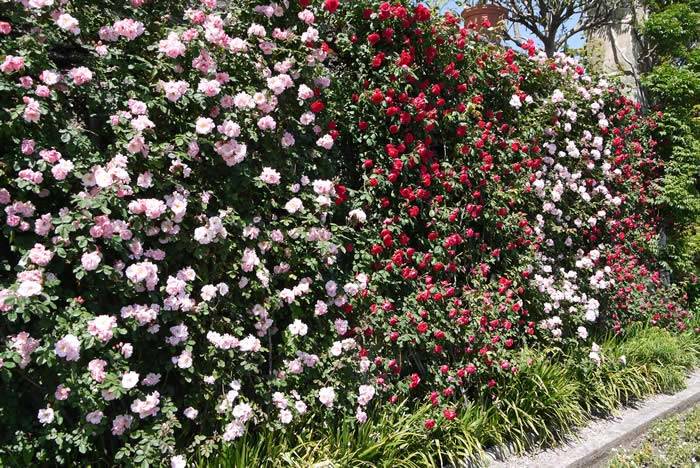
Urban Garden Climbers – a wall of stunning climbing roses in flower

